Hi friends,
Over the last year, I’ve been collecting stories and insights on how to build better neighborhoods.
In Kenya, it was heartbreaking to see children coming to our clinics repeatedly for diarrhea. Diarrheal diseases kill 2,195 children around the world every day — more than AIDS, malaria, and measles combined. It costs us 56 cents to treat, and safe water and food storage go a long way towards prevention.
A lot of what I saw working in urban health in Kenya were diseases directly related to the environments people lived in, the services they had access to, and the streets they walked on.
Beyond urban health, I simply feel better when I wake up in a place I love. More awake, energized for the day. I spend more time outside. Everyone deserves to wake up in a place that feels like home.
Over the next few months, I’ll be sharing a few deep dives into the challenges facing global cities. Challenges like heat islands, pollution, and food access. Challenges like a lack of greenery, beauty and “moveability”. I like the lean, person-centered approach to problem solving that many entrepreneurs are using to make neighborhoods better for the people who live there, so innovators will play a prominent role in this series.
Today, we’re diving into urban heat islands.
I grew up in the Washington DC metro area.
We had those sweltering summers where you would be eager as a kid to go to museums just to feel that blast of air conditioning.
DC summers are hot.
City summers are hot.
And the urban heat island effect is one reason why.
Urban heat islands occur when cities literally trap heat amongst buildings, concrete and dense development. Built infrastructure absorbs and re-emits the sun’s heat more than natural landscapes do.
The slow heat release from building materials lasts even past sunset. This means that the city doesn’t just feel hotter during the day, but doesn’t have as much time to cool down in the evenings.
Also, dense development blocks the flow of wind, creating Urban Canyons with no breeze.
So cities are hotter than suburbs – up to 7º hotter than surrounding areas!
But what’s fascinating is there are also large differences between city neighborhoods.
The neighborhood level differences in heat almost perfectly correlate with income. Lower income houses are also less likely to have air conditioning, and lower income families are more likely to have existing health conditions. This trifecta of hotter neighborhoods, less AC and more pre-existing conditions exacerbates the health impacts of heat.
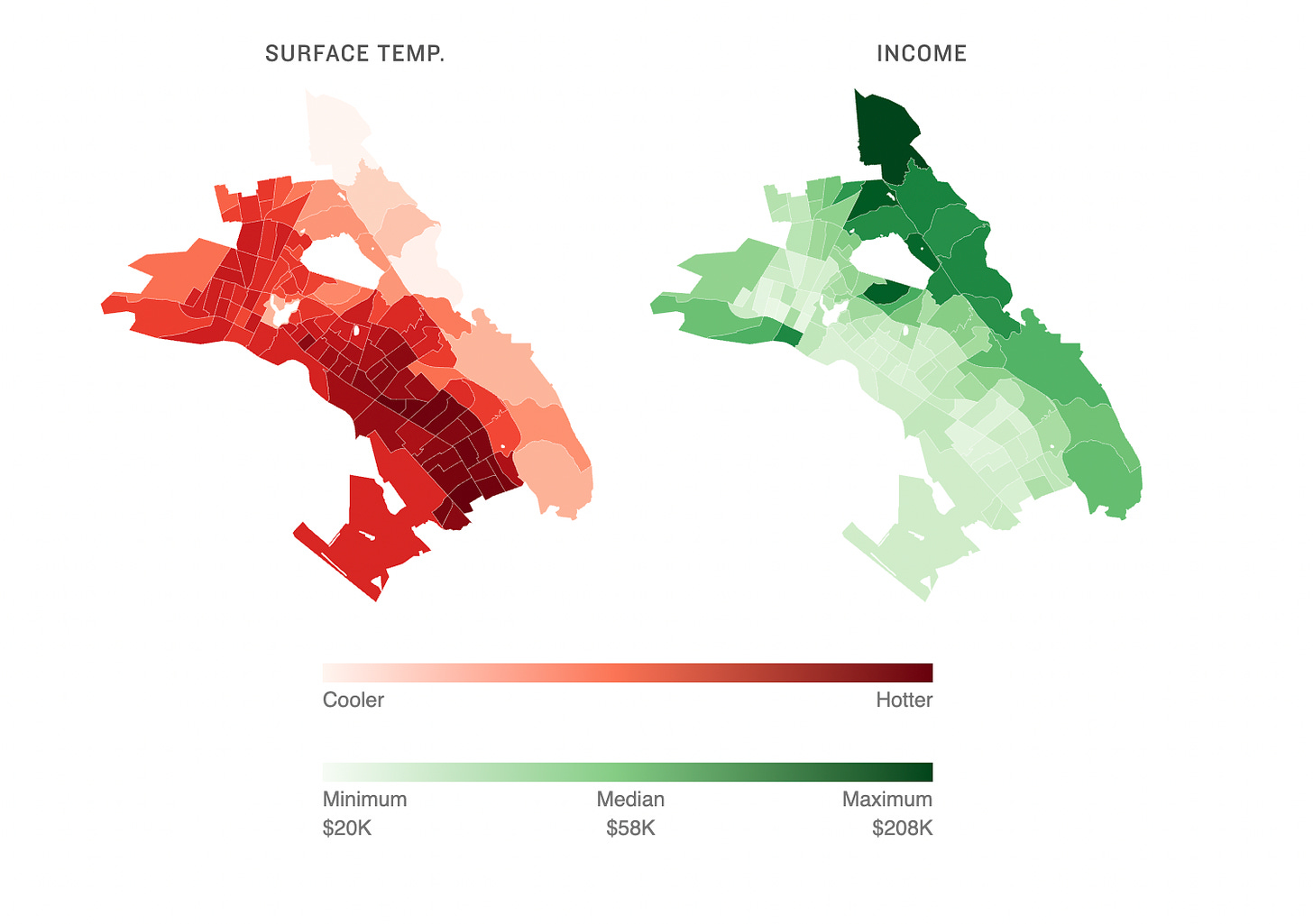
In the US, heat is already responsible for more deaths annually than any other weather condition. And with urban populations expected to double by 2050, that probably means more heat-related health problems, like heat strokes, exhaustion and difficulty breathing.
There are technologies and innovators today that are working on urban heat islands. Let’s take a look at Green Roofs, and Cool Pavement.
Green Roofs
Green roofs – or rooftop gardens – are cooling the air around them, some are providing shade to building residents, and they can cool the surface temperature of a rooftop by up to 40°F! They can also help with water run-off, and are a source of beauty and food, two of my other favorite indicators of great neighborhoods.
On a city-wide scale, green roofs reduce the energy the city needs to power air conditioning. And running fewer air conditioners in turn helps cool that neighborhood a little. Think of those window AC units: they blow cool air inside and hot air back out.
My favorite startup working on this is DirtSat with their smart rooftop gardens. Their platform can identify which roofs can bear gardens, and monitor plant and crop health after a garden is setup. The existing processes to evaluate and monitor rooftop gardens are mostly manual, and their platform saves private developers and city planners time and money.
Onto cool pavements
Here are two crazy facts about pavements:
Pavements can reach 150°F in summertime.
30-45% of city land cover is pavement!
Cool pavements reflect the sun's heat instead of absorbing and storing it. Products like CoolSeal are a lighter color and more reflective. Think of it like wearing a white tee-shirt instead of a black one in the summer.
Cool pavement technology is far from perfect. In fact some “cool pavements” feel hotter to stand on because of the heat reflecting back upwards. But progress so far shows it’s an area for scientists and entrepreneurs to keep working on, and there will be more data on what works soon from LA's huge rollout.
Beyond cooling pavement through working on the surfaces, think about the role of autonomous cars in the future. With precise driving, we can have more grass on roads with just two tracks for the wheels. That means less concrete and more green.
The Arsht-Rock Foundation is funding Chief Heat Officers in cities from Freetown in Sierra Leone to Miami, Florida. I’ve talked before about architects like Nir Buras and his Classical Planning Institute using traditional architecture to make buildings more beautiful - and also less dependent on energy sucking concrete. And of course, actual community organizing and representation has to complement all of the cool innovation (pun intended). Startups are not 100% of the solution, but they’re certainly showing how to build certain pieces of the puzzle. In fact, we need a Part II because I couldn’t fit all of the innovators in this week.
With urban populations expected to double by 2050, there is a huge opportunity for new and growing cities to incorporate "cool design" from scratch. That’s going to take continued investments in technologies, but also new policies, and buy-in from people and planners. It is an opportunity to make our cities a little happier and healthier.
Thanks for being here! Let me know where you are seeing cool innovations.
Melissa



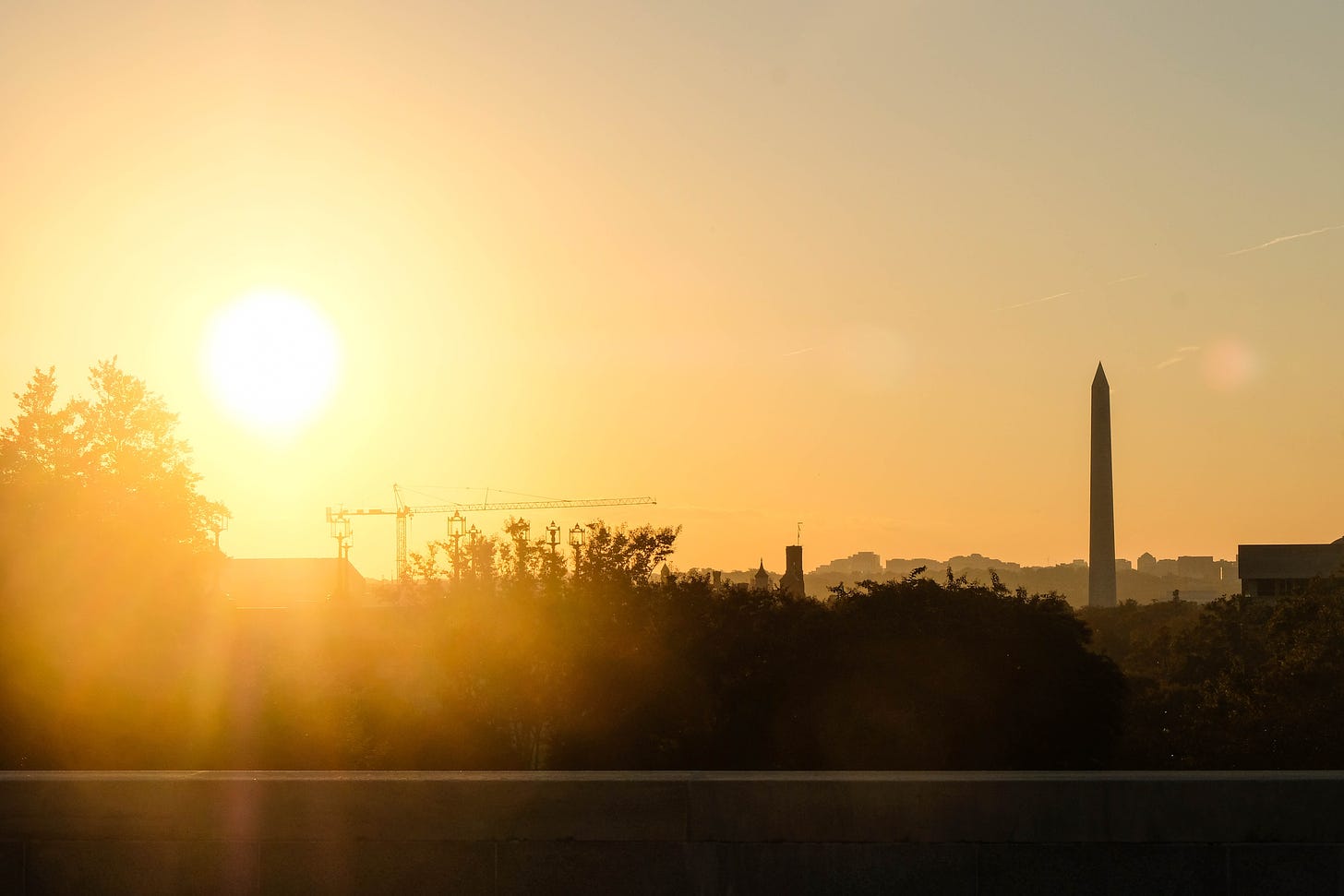
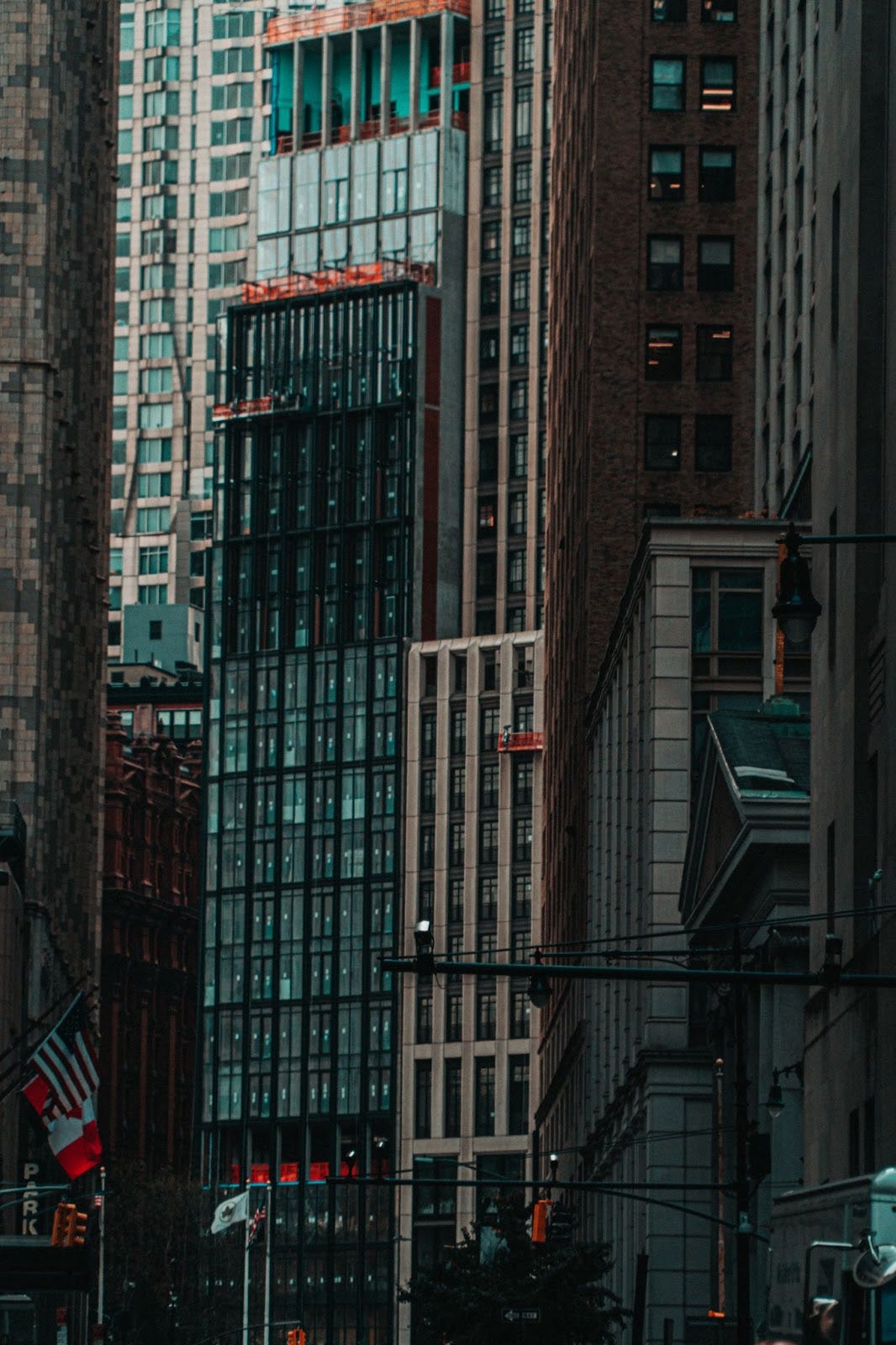
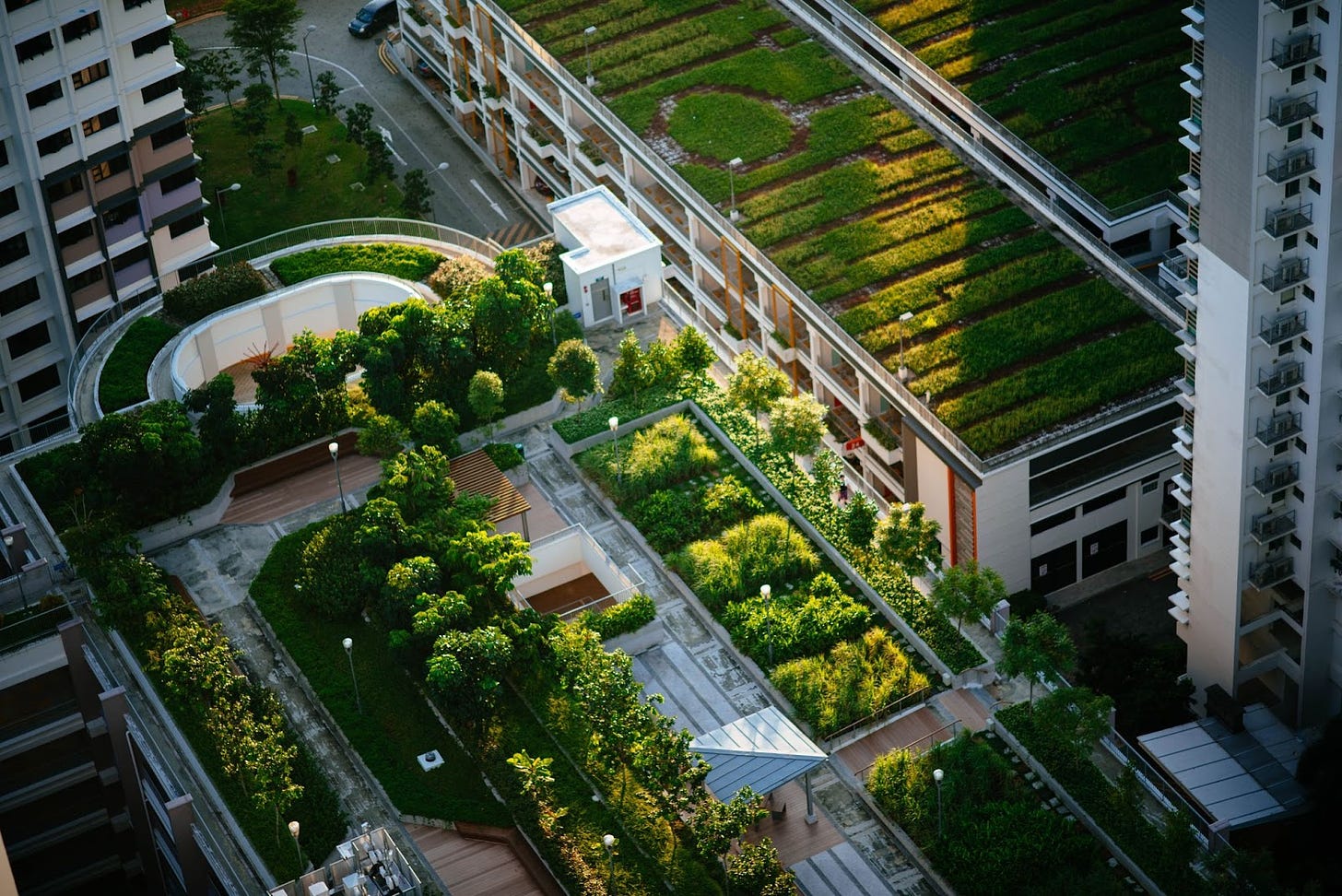

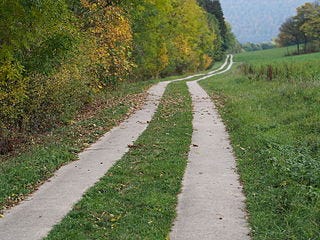
I never get bored of your newsletters, Melissa. I learn something new, get access to new ideas and resources each and every time. Thanks for being in my orbit.
So well done, as always. "In the US, heat is already responsible for more deaths annually than any other weather condition," blows my mind. No one knows that. Now we do!